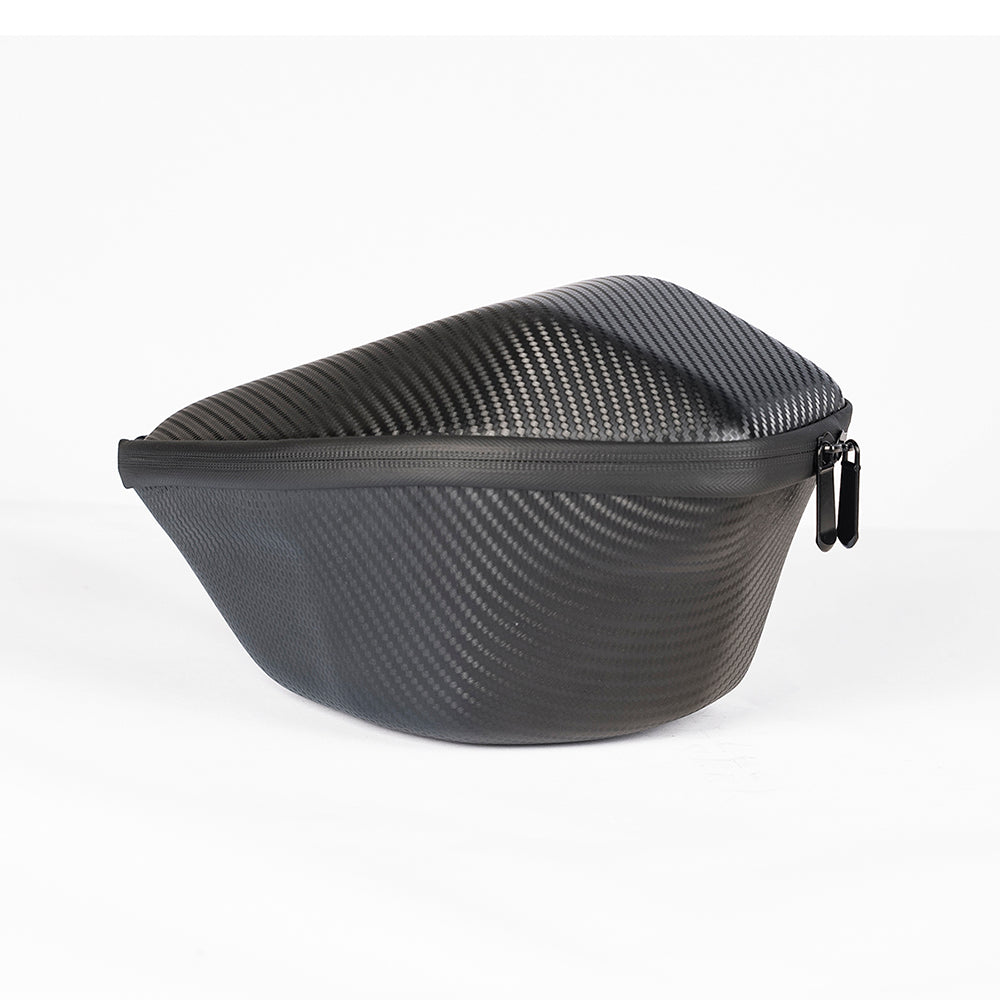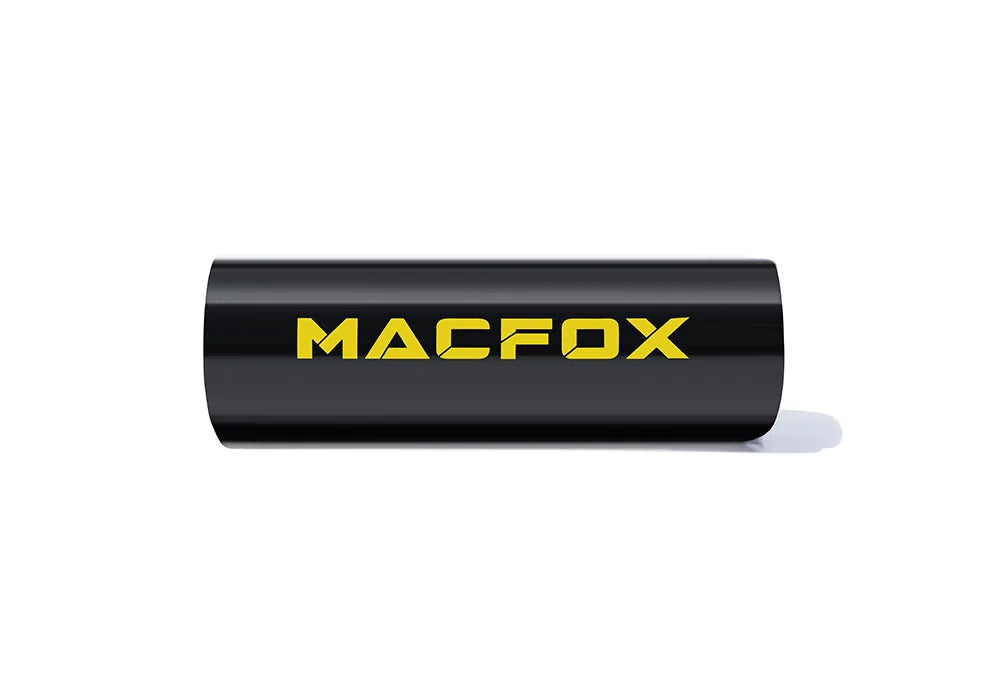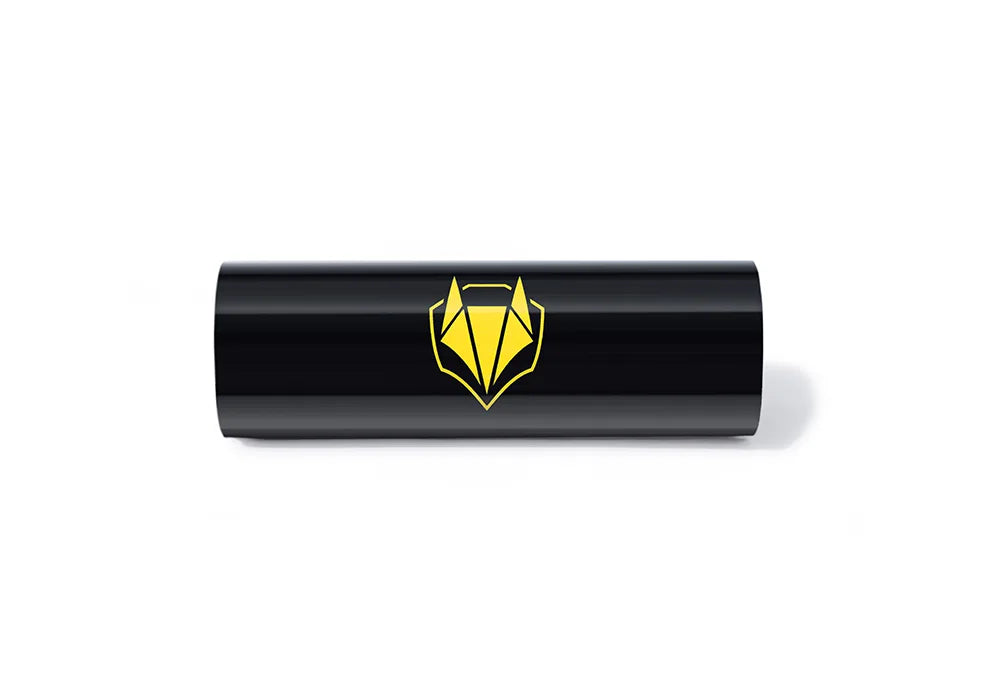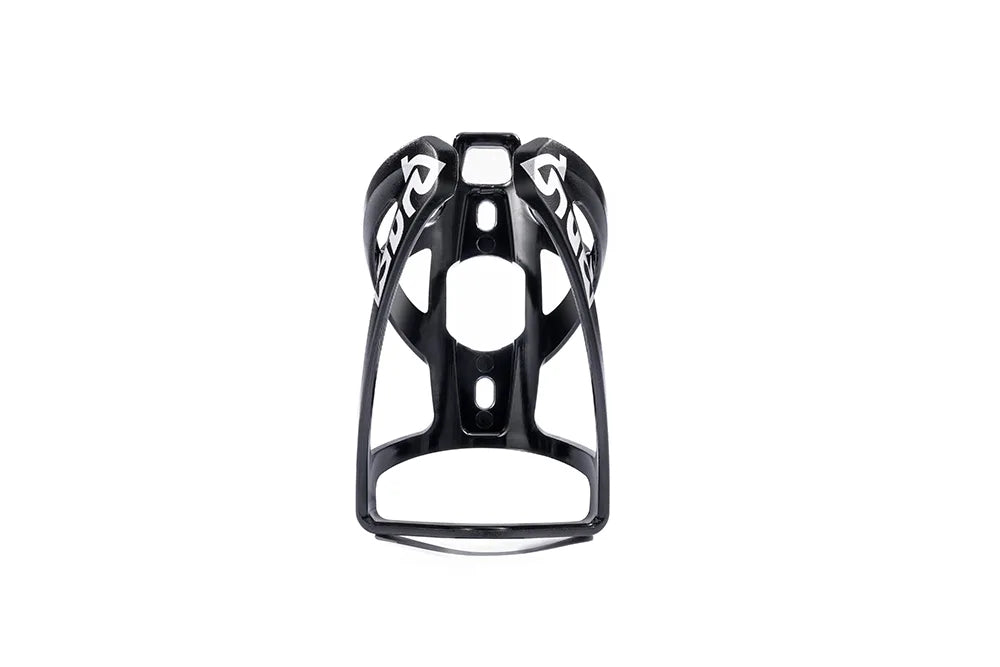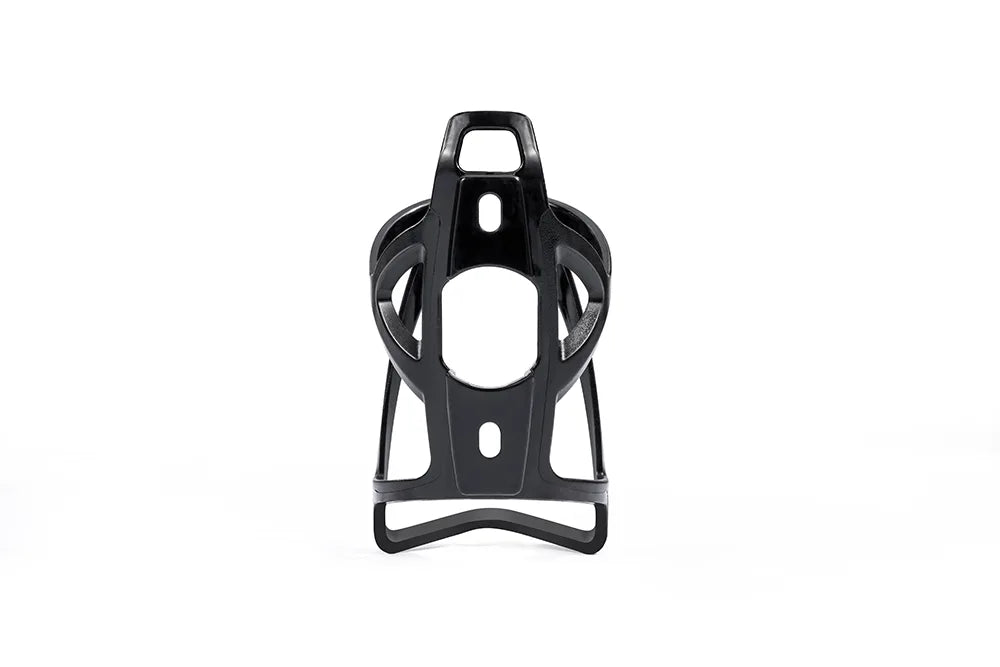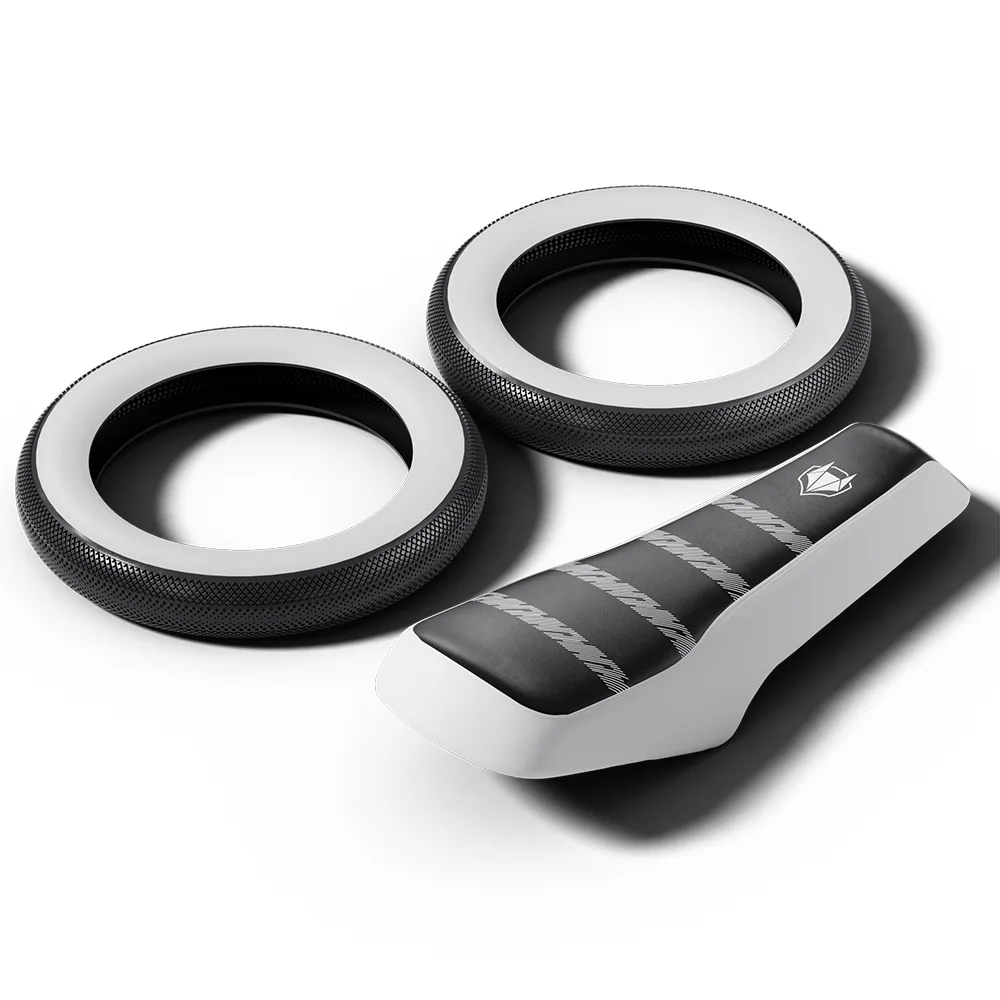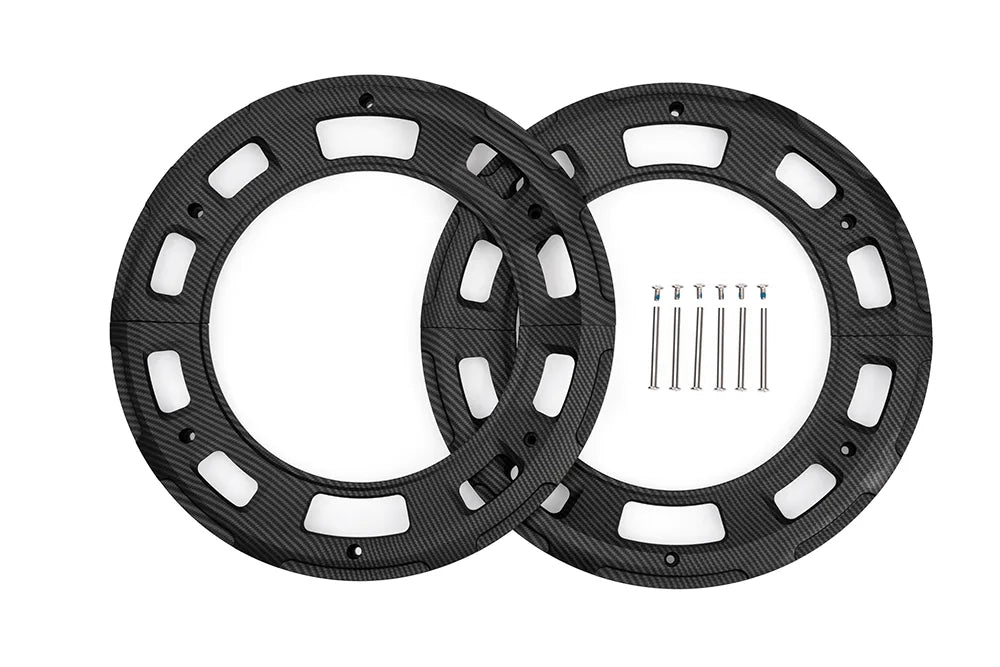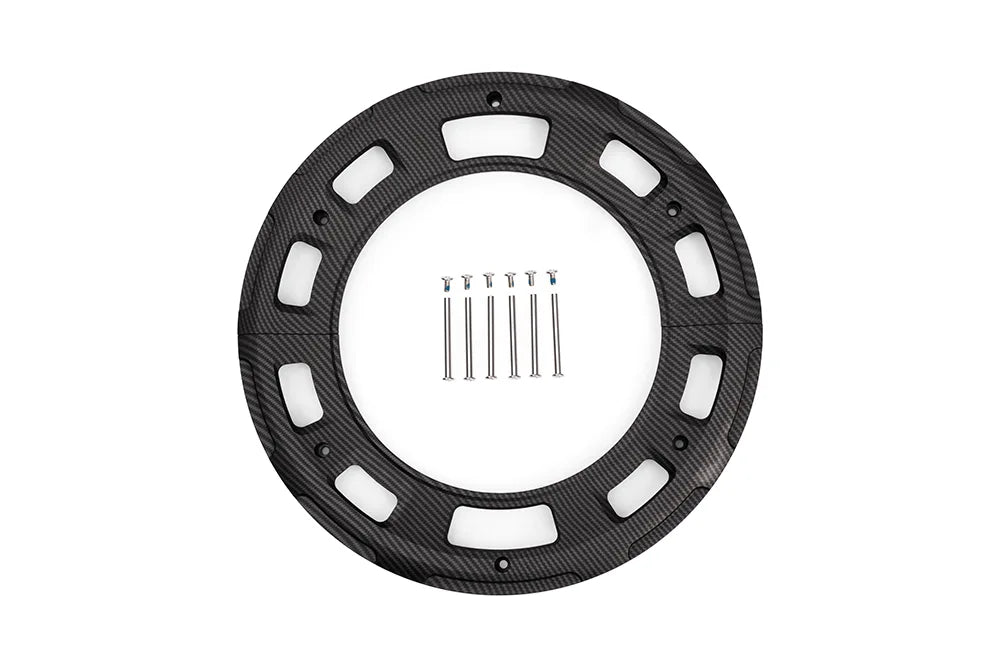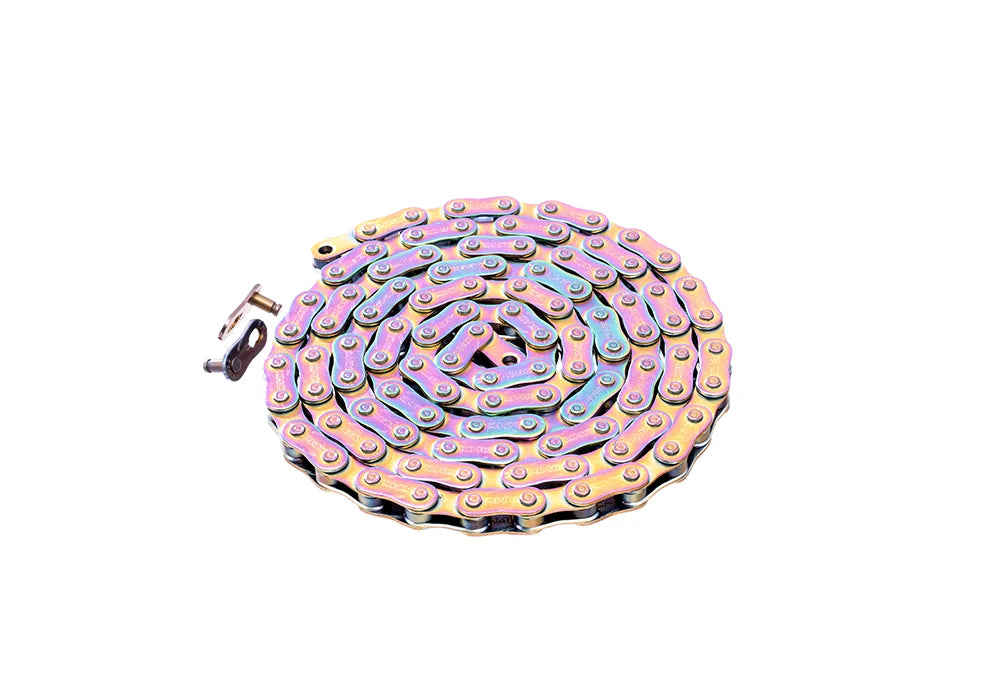
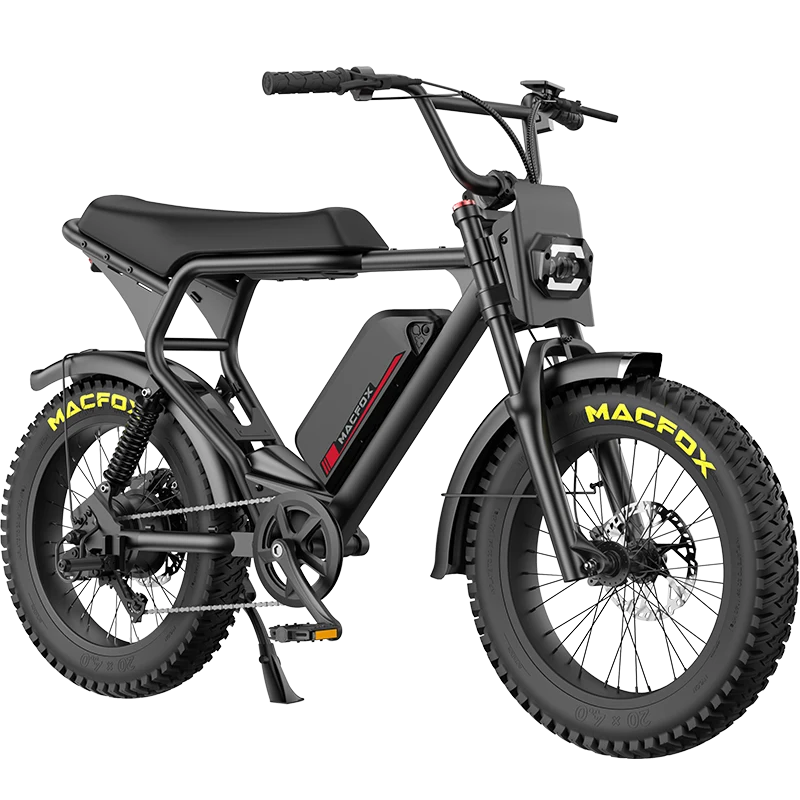
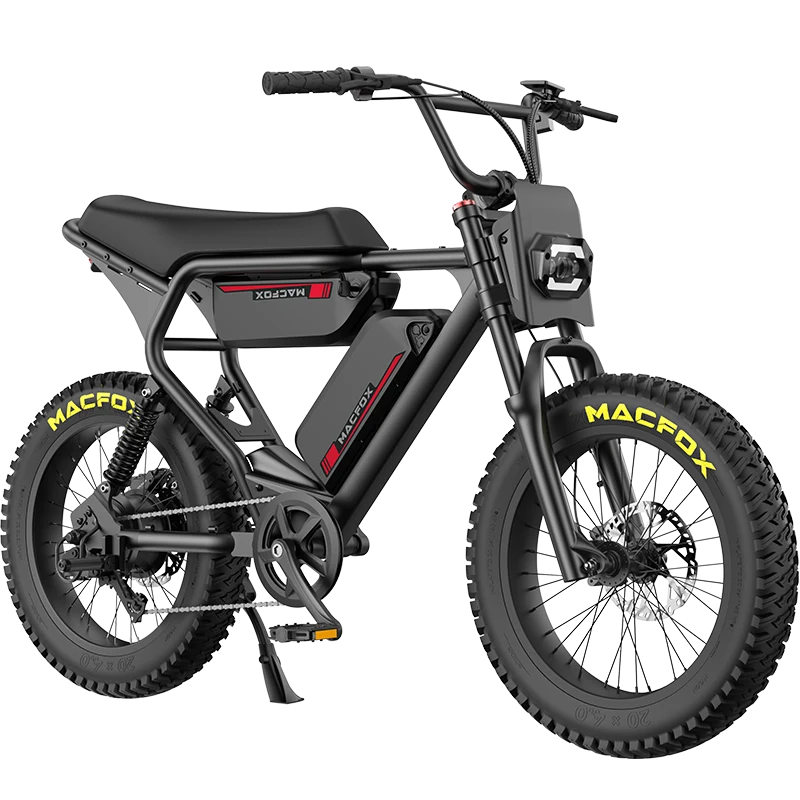
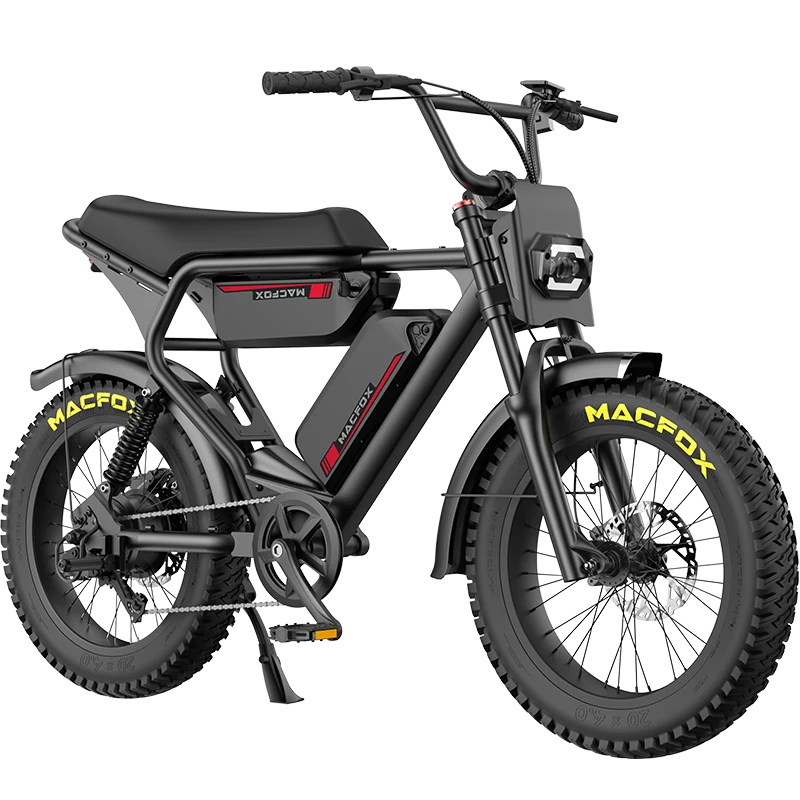
Macfox X2 Electric Mountain Bike
RIDESTYLE WITH
YOUTH ENERGY
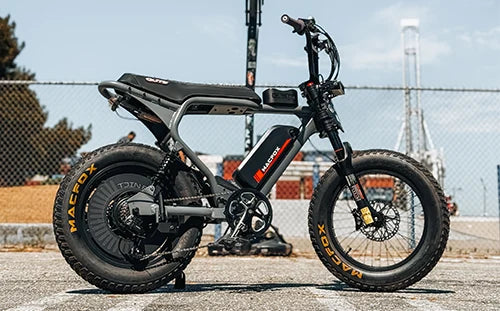
MACFOX EMPOWERS YOUTH COMMUTING WITH LEGAL ROAD SAFETY, STUNT PLAYABILITY, AND ROOM FOR CUSTOMIZATION.
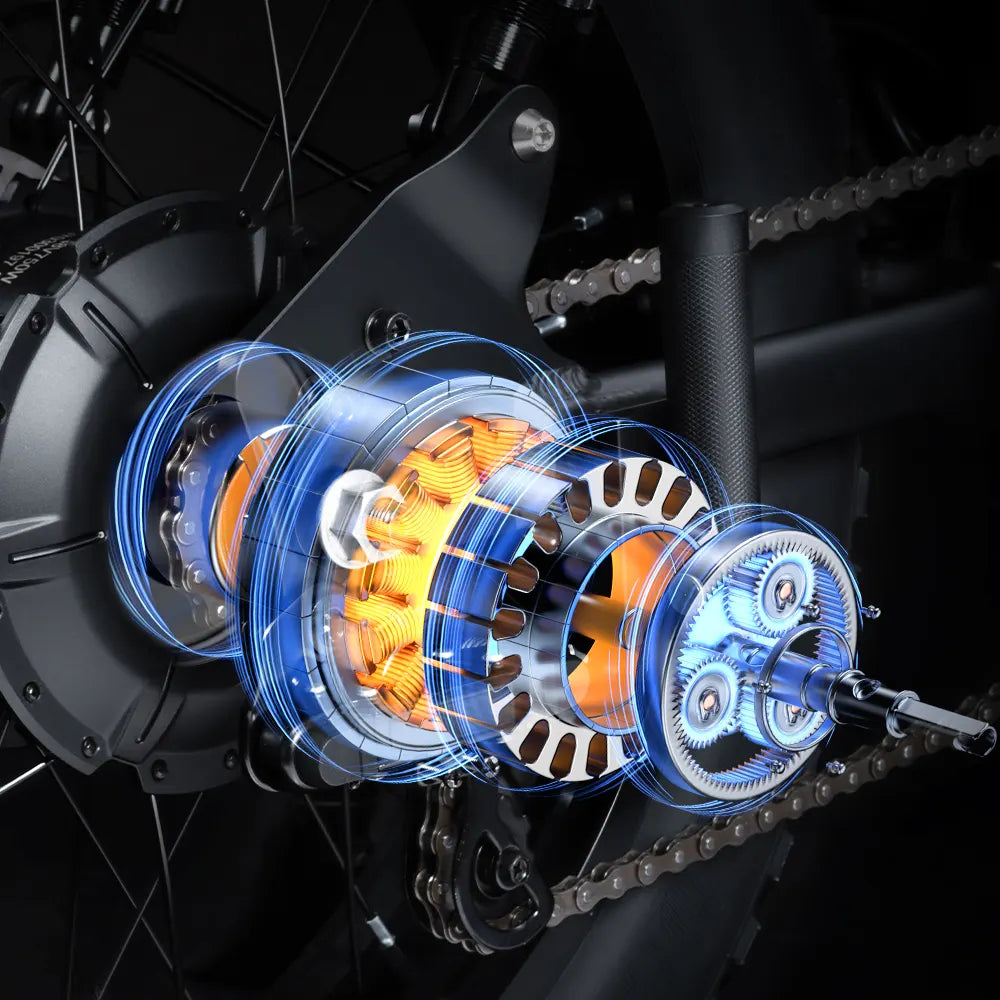
*MACFOX battery interfaces are fully compatible, allowing you to upgrade to higher-capacity batteries for extendedrange. However, please note that the selected battery capacity must not be lower than the standard battery to ensurebike performance and safety.
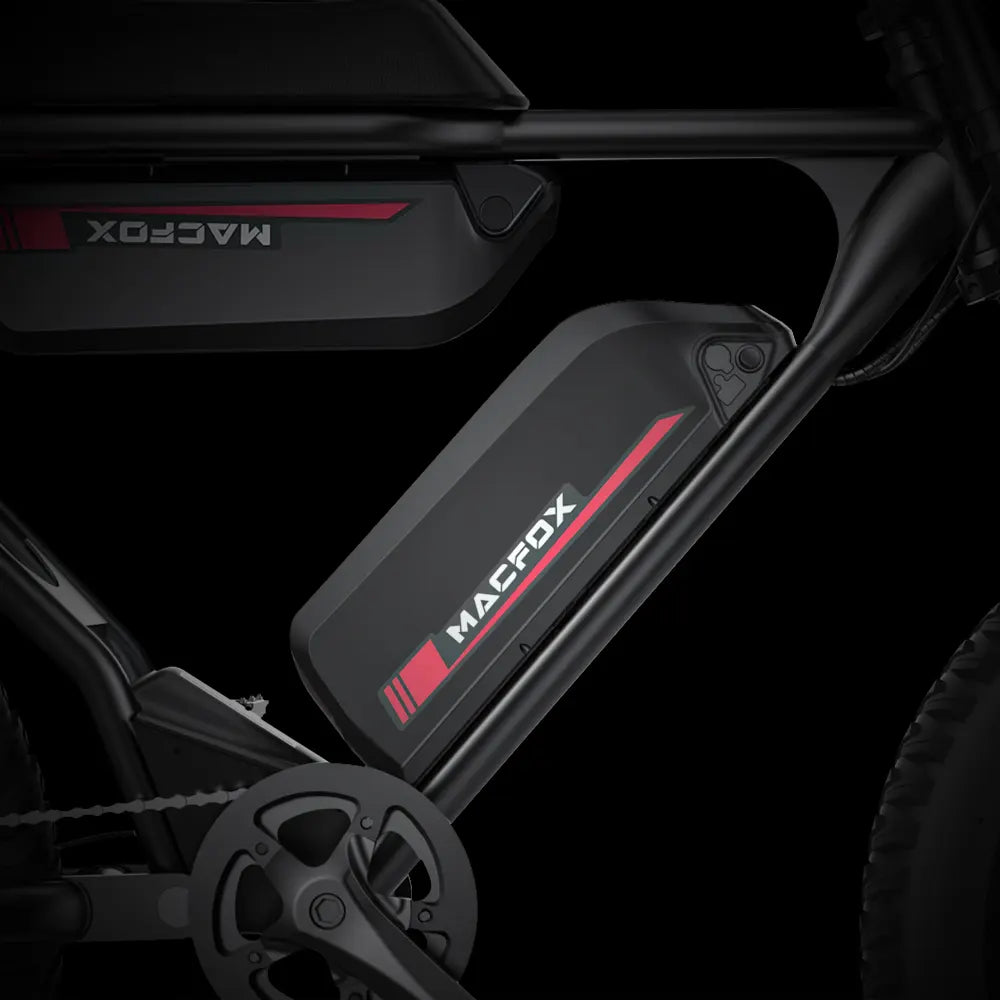
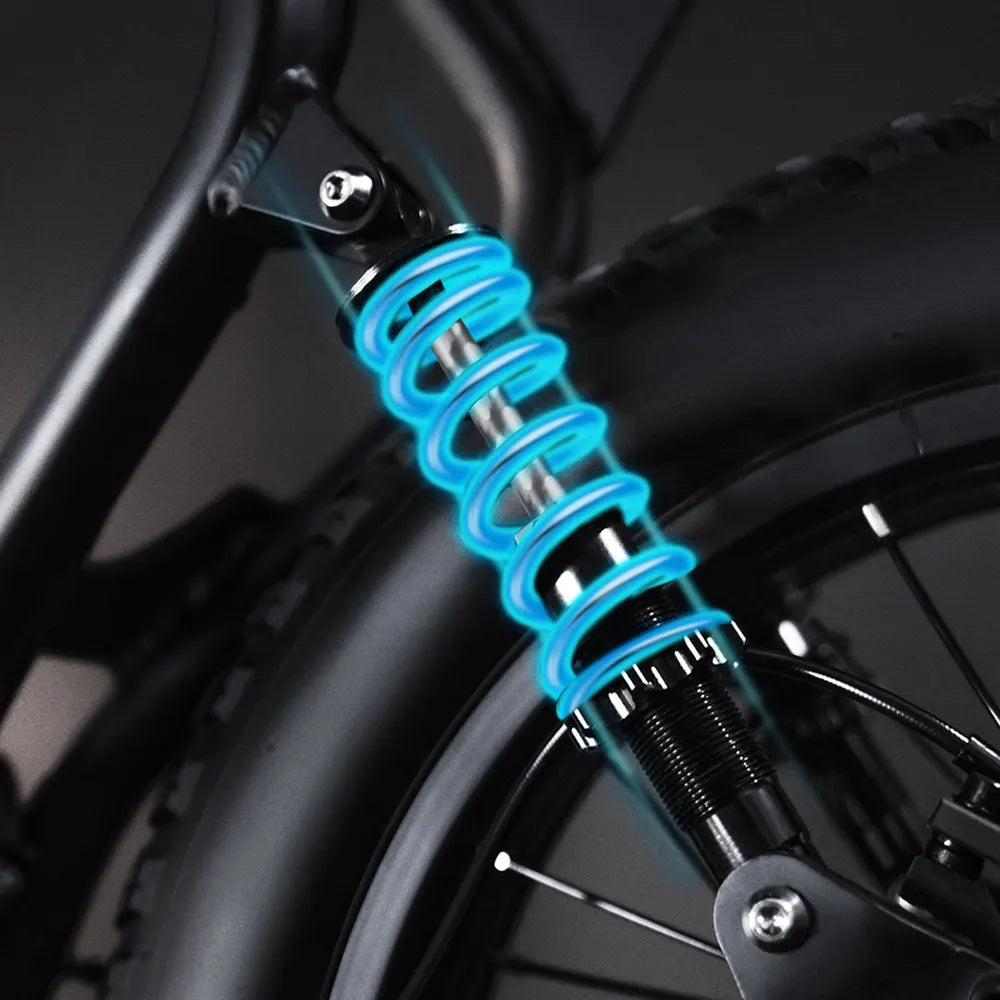


*MACFOX battery interfaces are fully compatible, allowing you to upgrade to higher-capacity batteries for extendedrange. However, please note that the selected battery capacity must not be lower than the standard battery to ensurebike performance and safety.

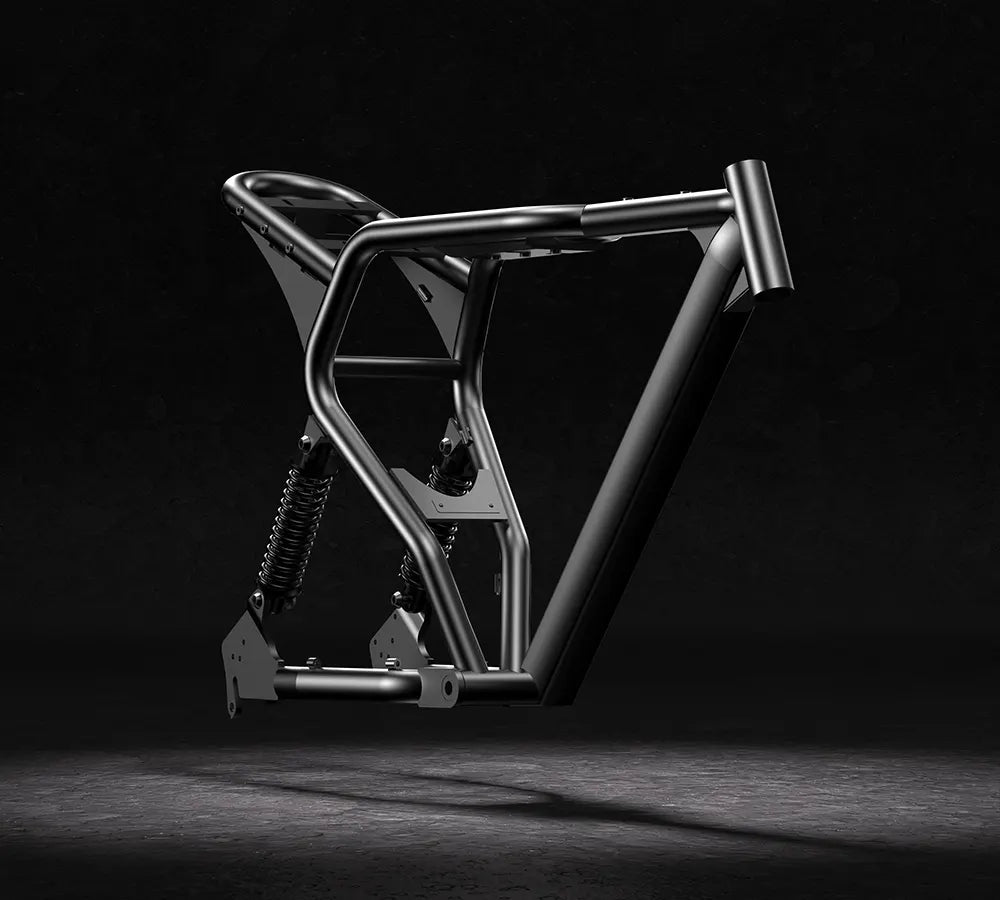
6061 Aluminum Alloy Frame
Crafted from high-strength 6061 aluminum alloy, the X2 frame is both lightweight and rugged - built to handle tough rides and daily commutes.
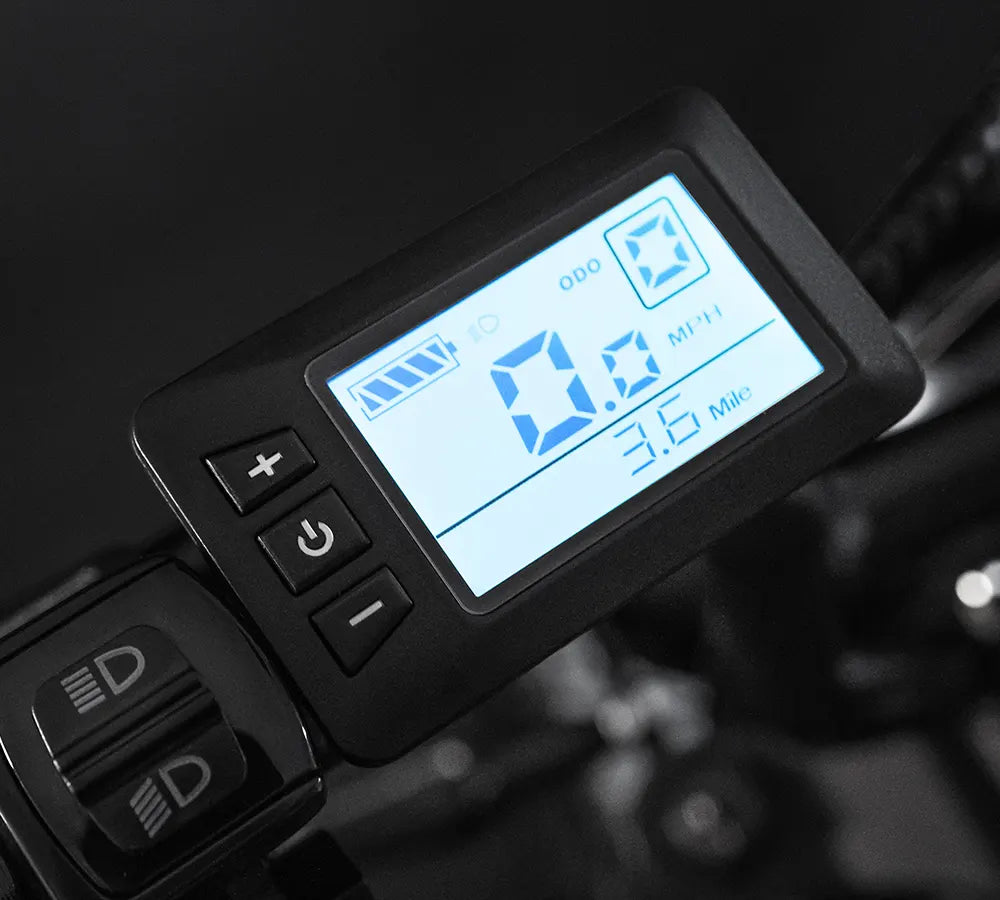
Advanced LCD Screen
Stay informed in real time with the LCD smart display - track speed, battery life, mileage, and more with just a glance.

Extended Padded Seat
The long, cushioned saddle is perfect for riding with a friend or stretching out solo - comfort meets functionality.

Hydraulic Disc Brakes
Responsive and smooth braking for maximum safety and control. Whether you're navigating traffic or cruising downhill, the X2’s hydraulic disc brakes deliver confident stopping power in any condition.
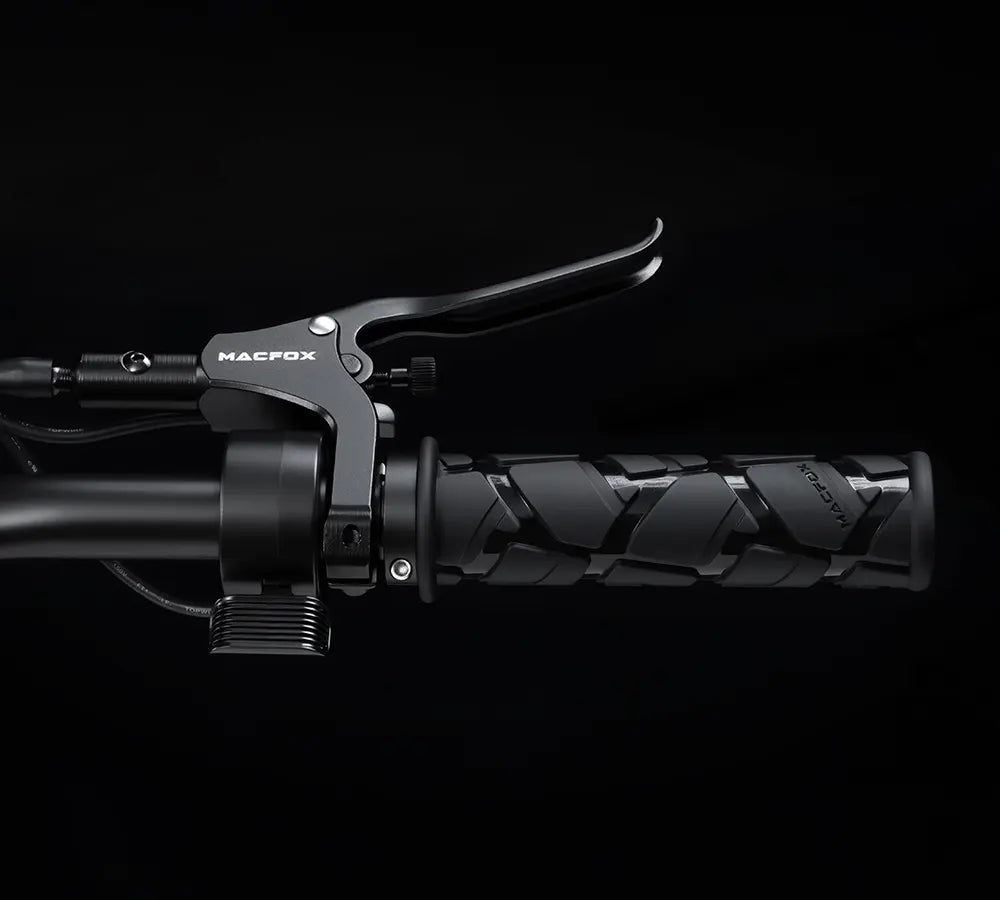
Adjustable Thumb Throttle
Whether you prefer accelerating with your left or right hand, Macfox’s removable and position-adjustable thumb throttle lets you easily pull off all kinds of tricks and stunts.
X2 SPECS
Top Speed
28mphRange
45-90milesCharge Time
6-7 hrsBattery
960Wh (48V 20Ah)Motor
750wPeak Power
1000wThrottle
Thumb ThrottleVehicle Weight
65 lbsL * W * H
65''*30''*41''Rider Weight Limit
220 lbsSeat Height
33''Frame
AluminumSuspension
Front + RearBrakes
Hydraulic Disc BrakesTires
20''*4.0'' TiresHead Light
LEDTail Light
LEDRecommended Rider Height
5'4''-6'4''
Some Things You Might Want To Know
IN THE BOX
Standard Package:
1x Macfox Electric Bike
1x Headlight
1x Taillight
1x Battery
1x Charger
1x Installation Tools
1x User Manual
Optional accessories (not included):
Bag
One extra battery
Fender
SHIPPING
Locations We Ship To:
We currently only ship within the continental United States.
Shipping Fee:
We offer the Free shipping on all eligible orders.
Shipment Processing Time:
All orders are processed within 3-5 business days. Orders are not shipped or delivered on weekends or holidays. Please note: All delivery dates are estimates only and are not guaranteed.
Shipment Way:
Macfox ships products via UPS or FedEx.
RETURN & REFUND
Cancellation:
You can request a full refund before an item ships. Once an item has shipped, cancellations are not possible.
Returns:
You may apply for a return within 15 days of delivery. To be eligible, items must be unused, in original condition, and in the original packaging. A receipt or proof of purchase is required. For assistance, contact support@macfoxbike.com. We will help create a return label and process your refund once the returned item is received and inspected. Approved refunds will be credited back to your original payment method within a few days.
Late or Missing Refunds:
If you haven't received your refund, check your bank account and contact your credit card company or bank as there might be processing delays. If the issue persists, contact us at support@macfoxbike.com.









